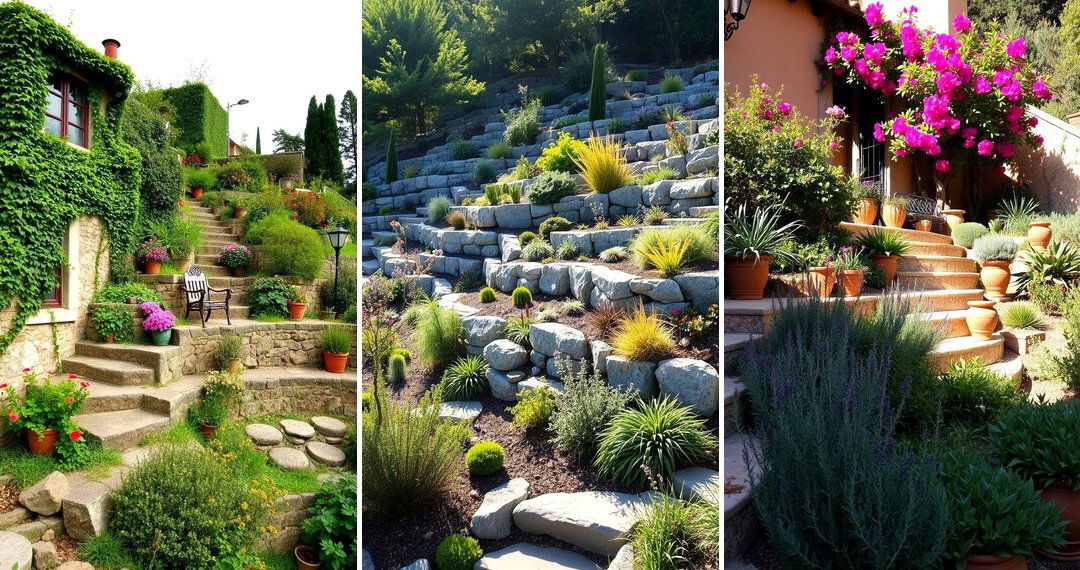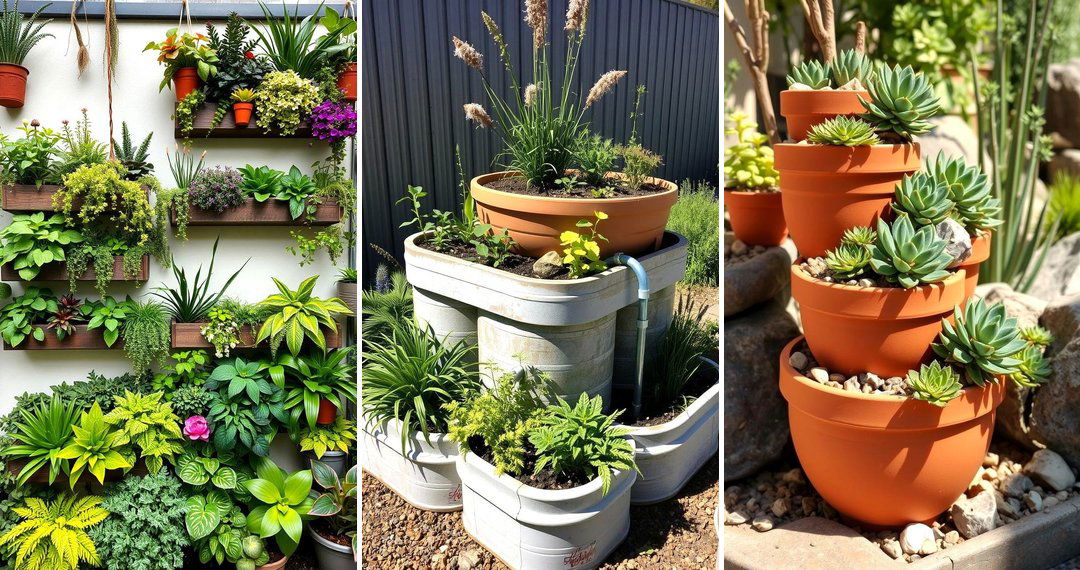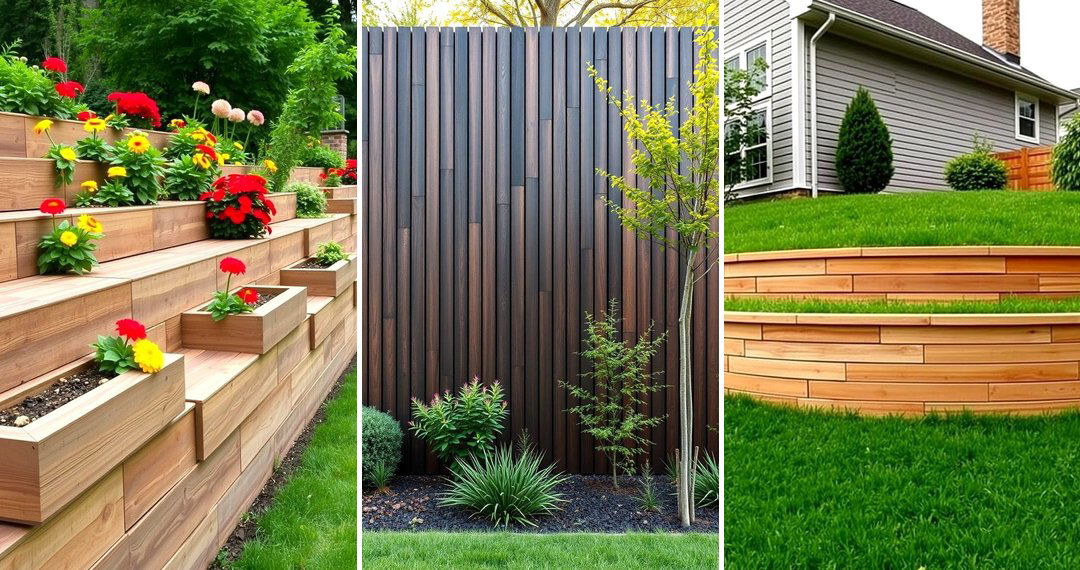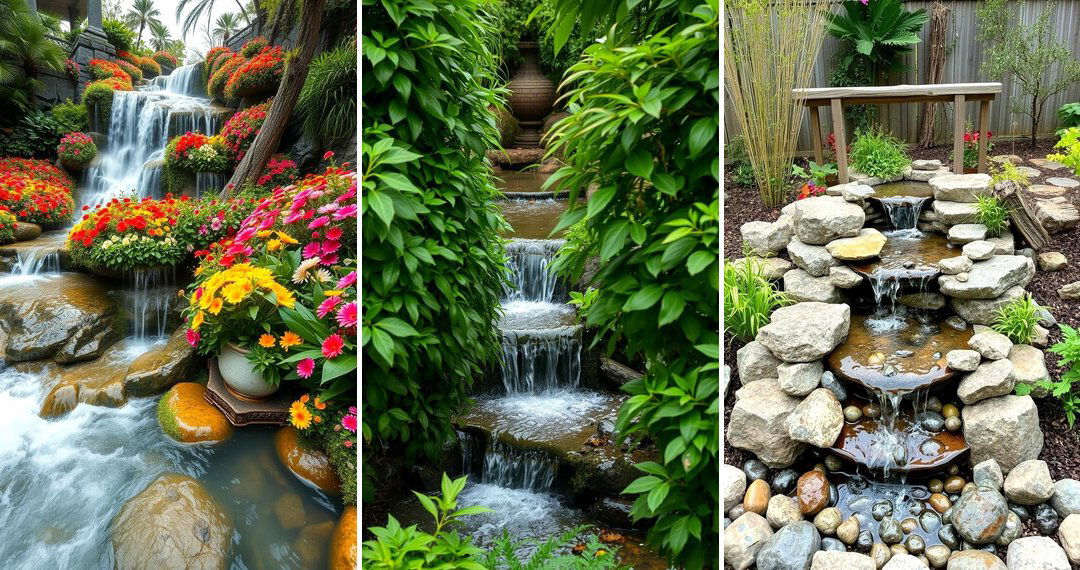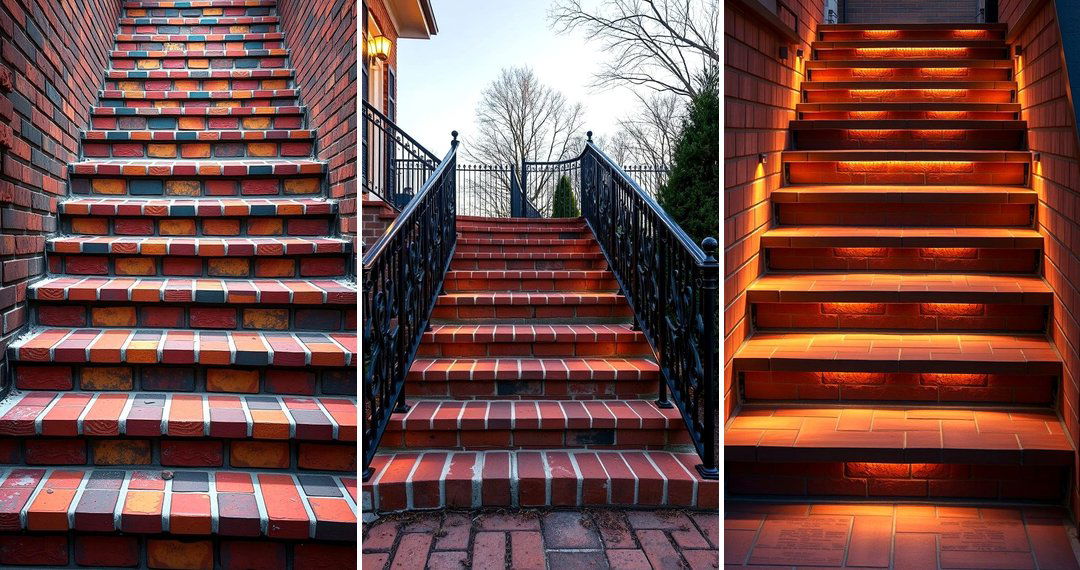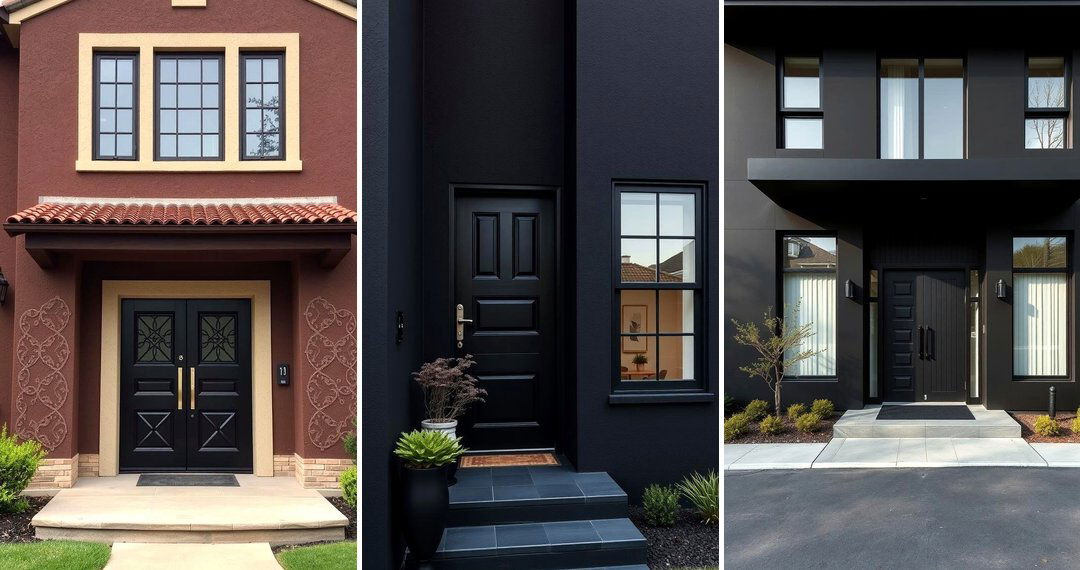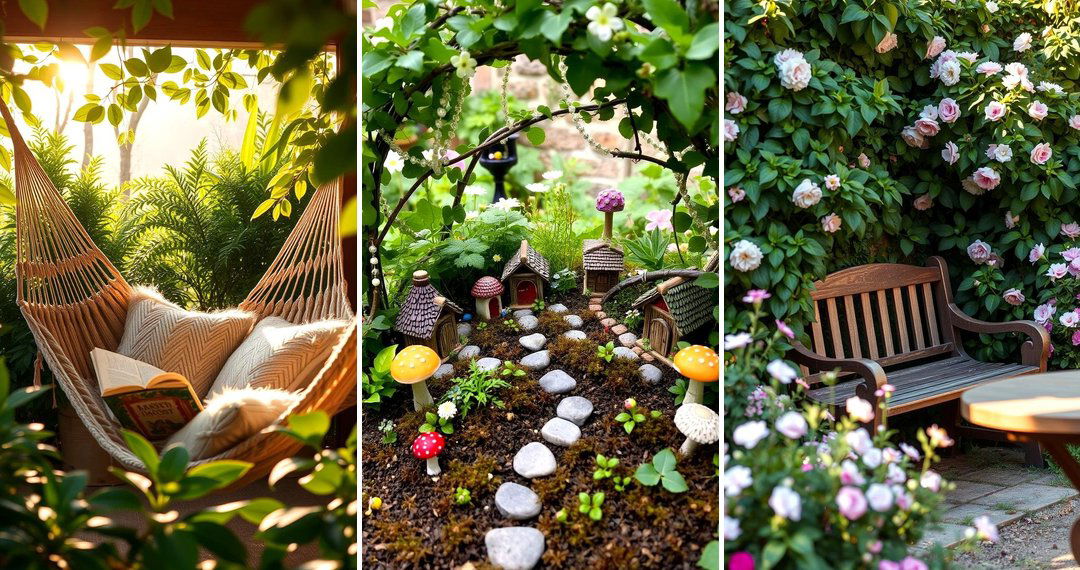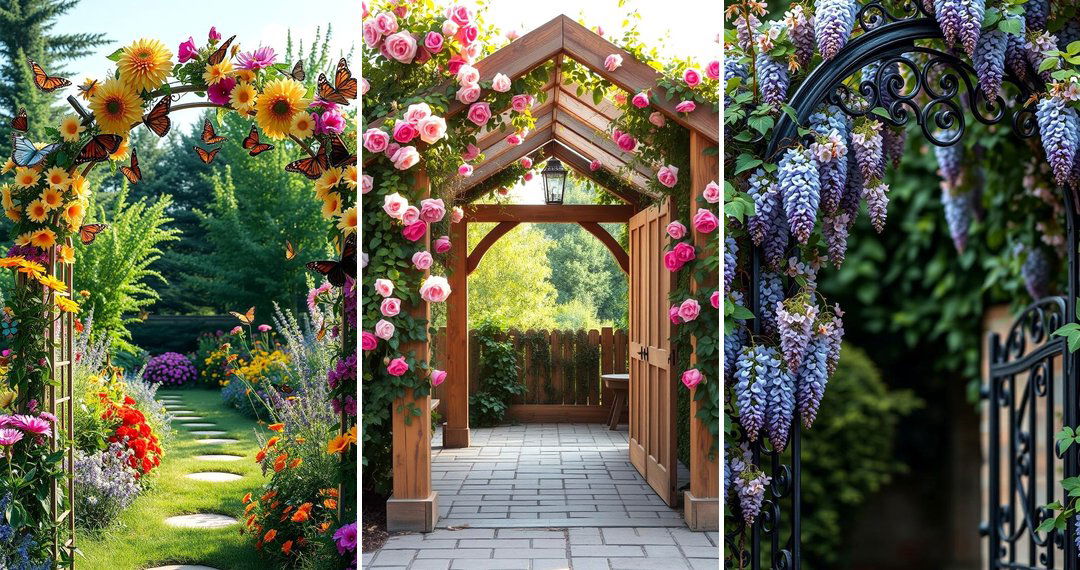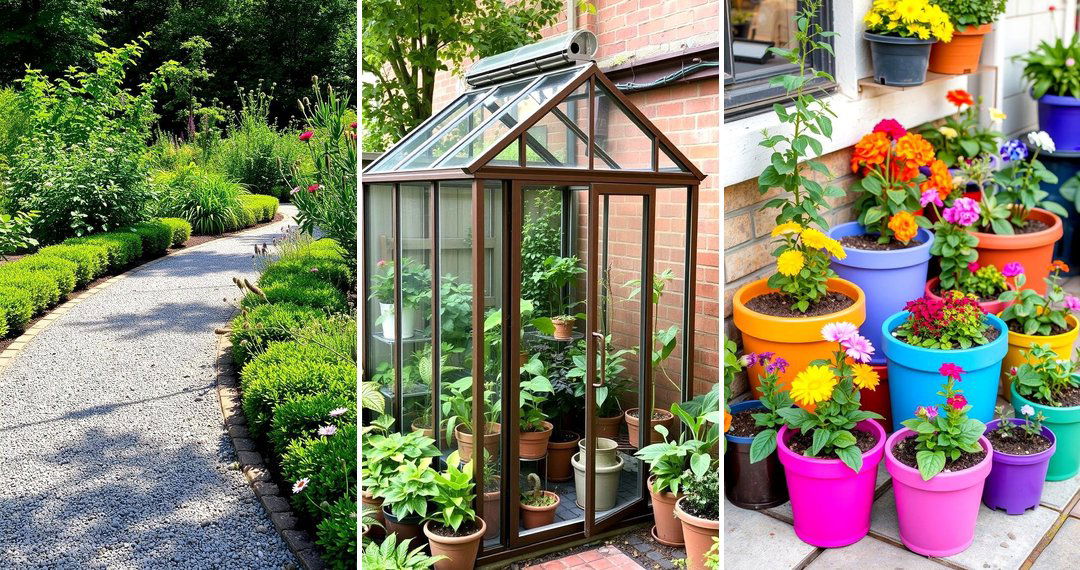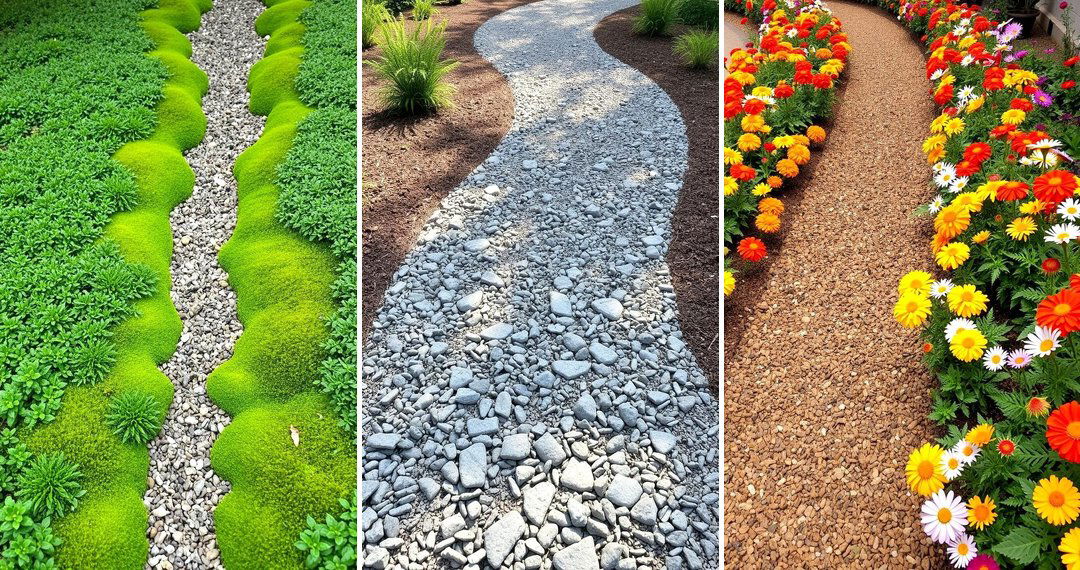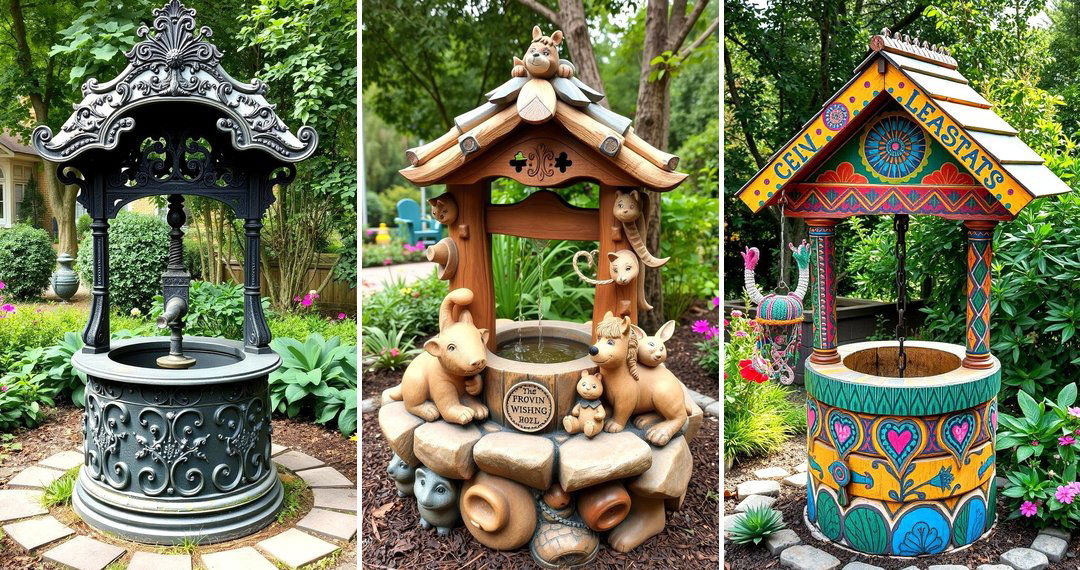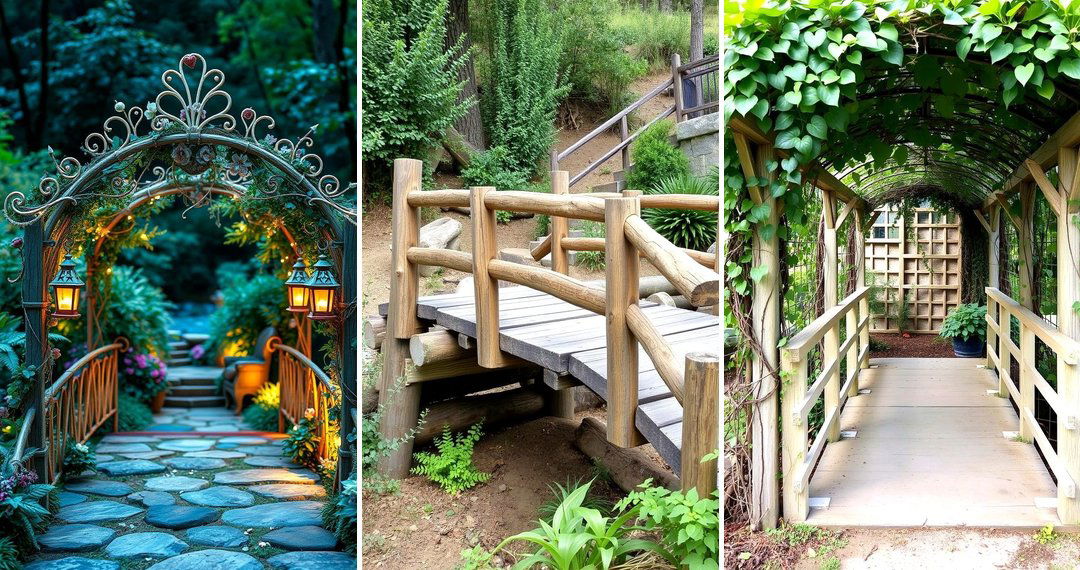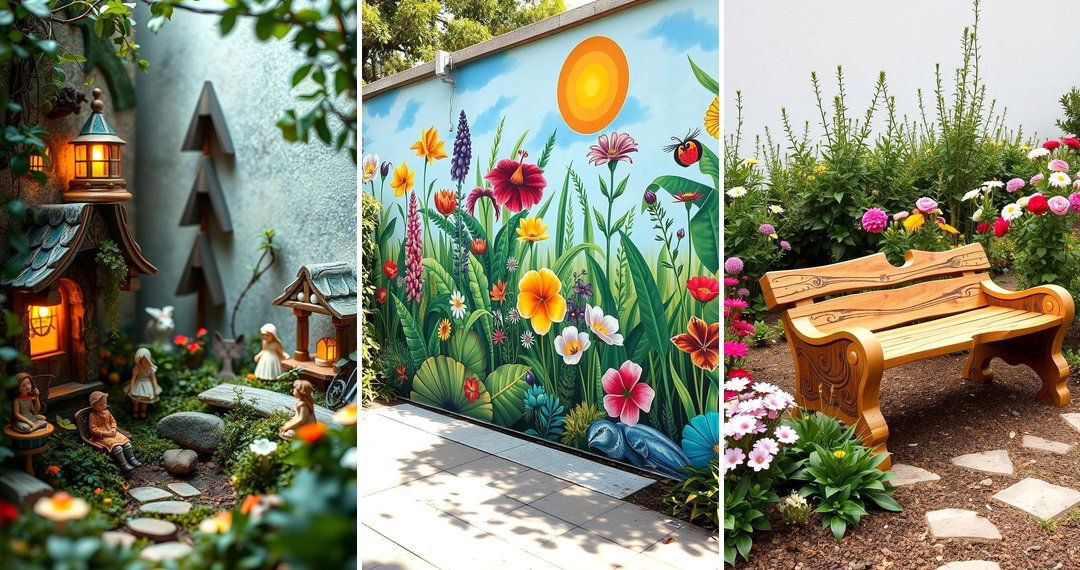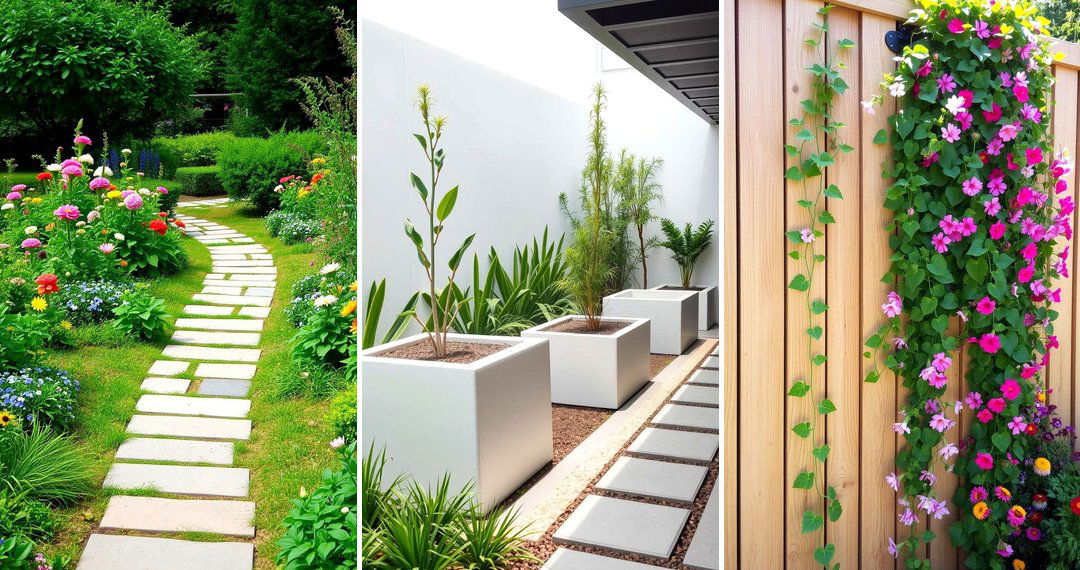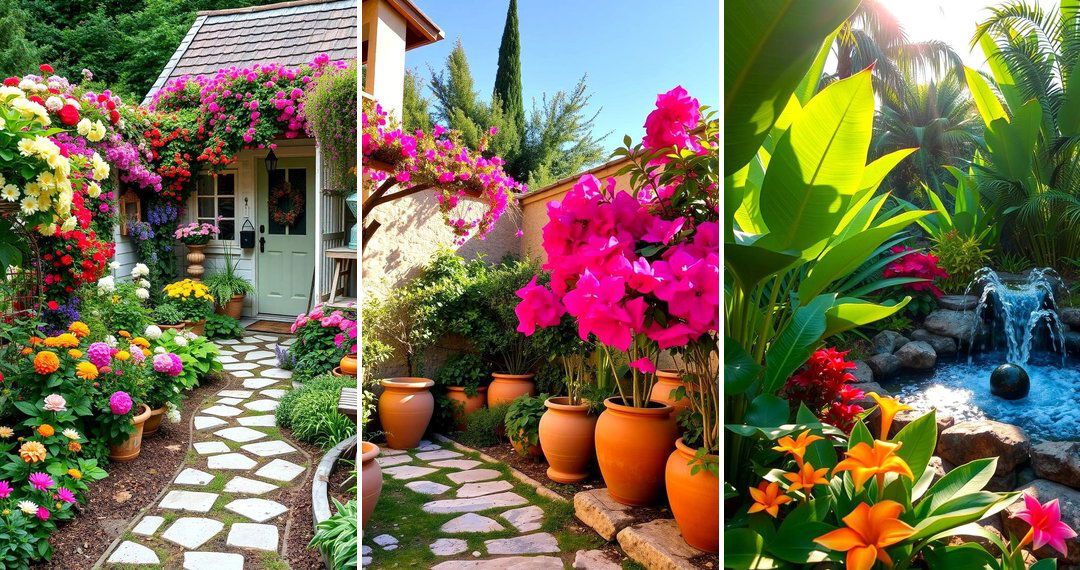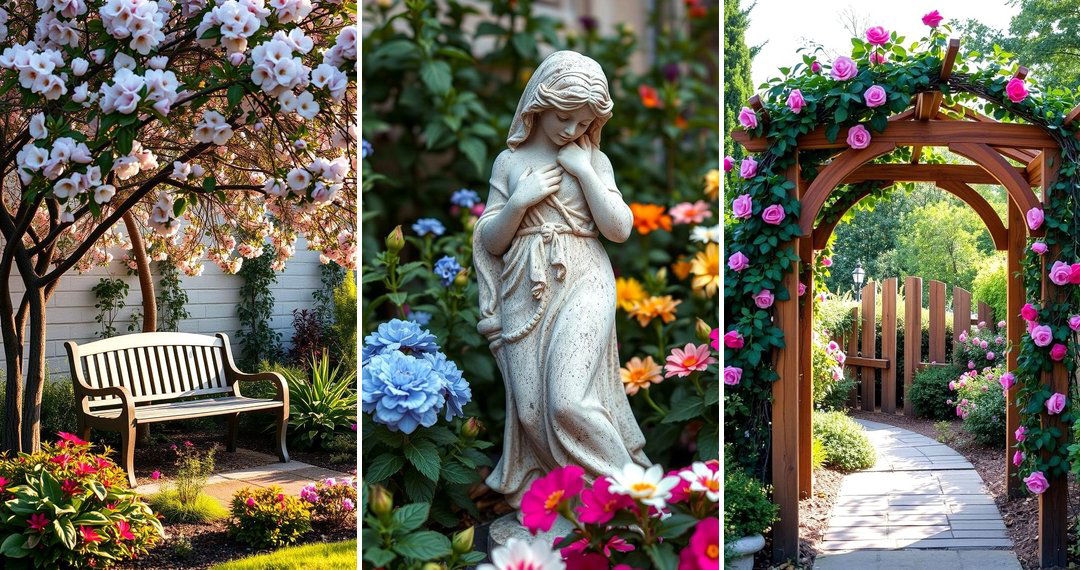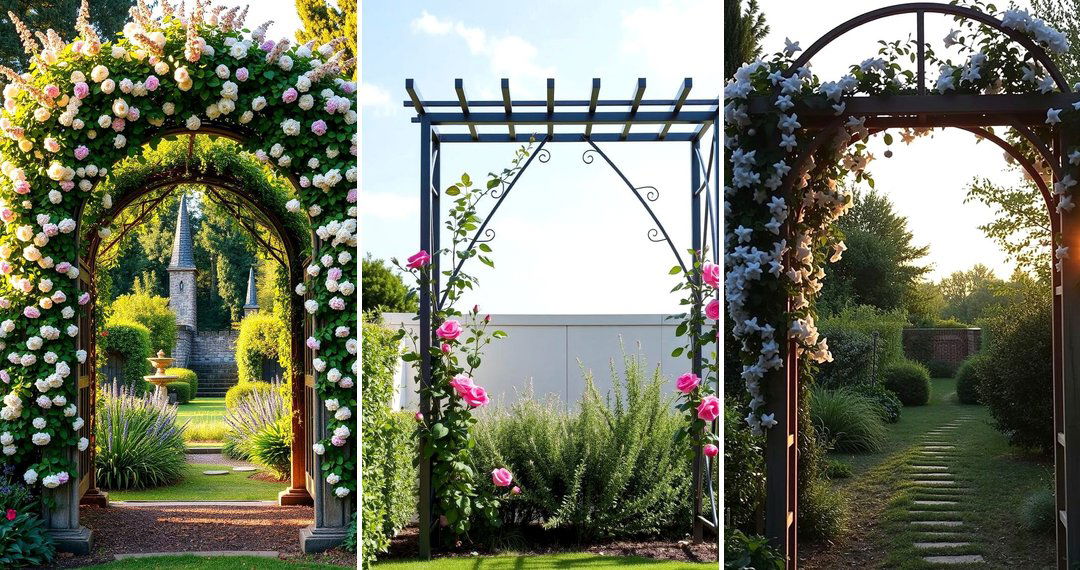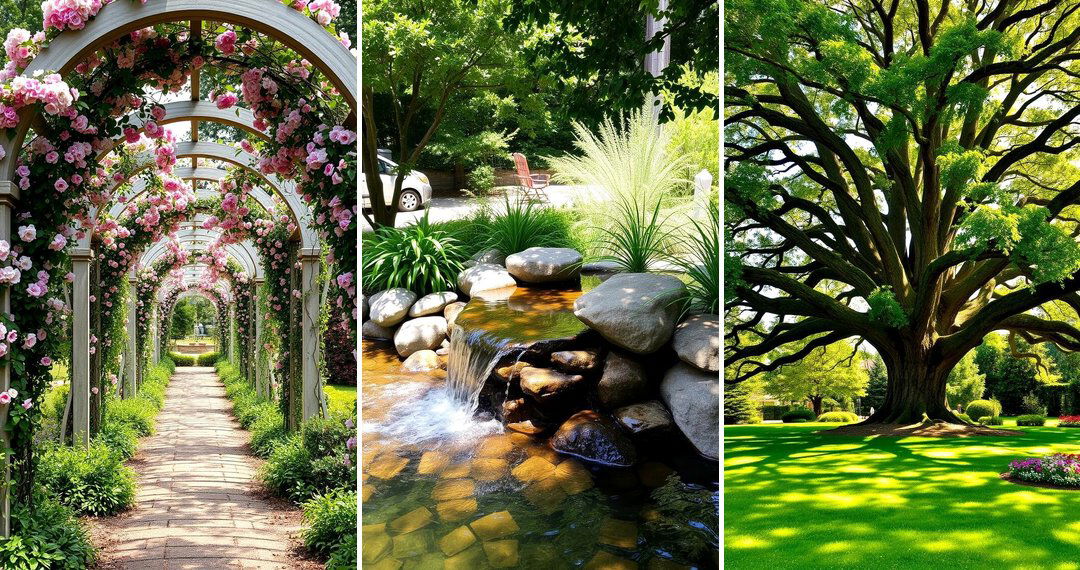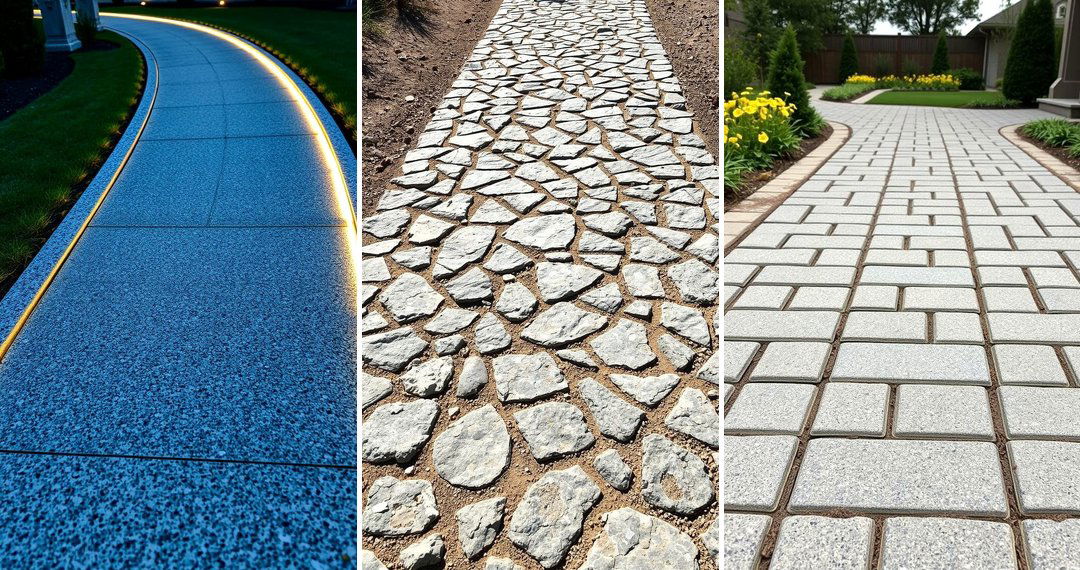Formal gardens, with their well-planned layouts, meticulous designs, and emphasis on symmetry, offer a timeless aesthetic that can elevate any outdoor space. These gardens create an atmosphere of tranquility, elegance, and order, providing both beauty and functionality. Whether you’re looking to redesign your backyard or plan a new garden from scratch, formal gardens offer countless possibilities for stunning outdoor spaces. From geometric shapes to carefully chosen plants, formal gardens make a statement about sophistication and refinement. Explore the ideas below to find inspiration for your next formal garden project.

1. Classic Geometric Garden
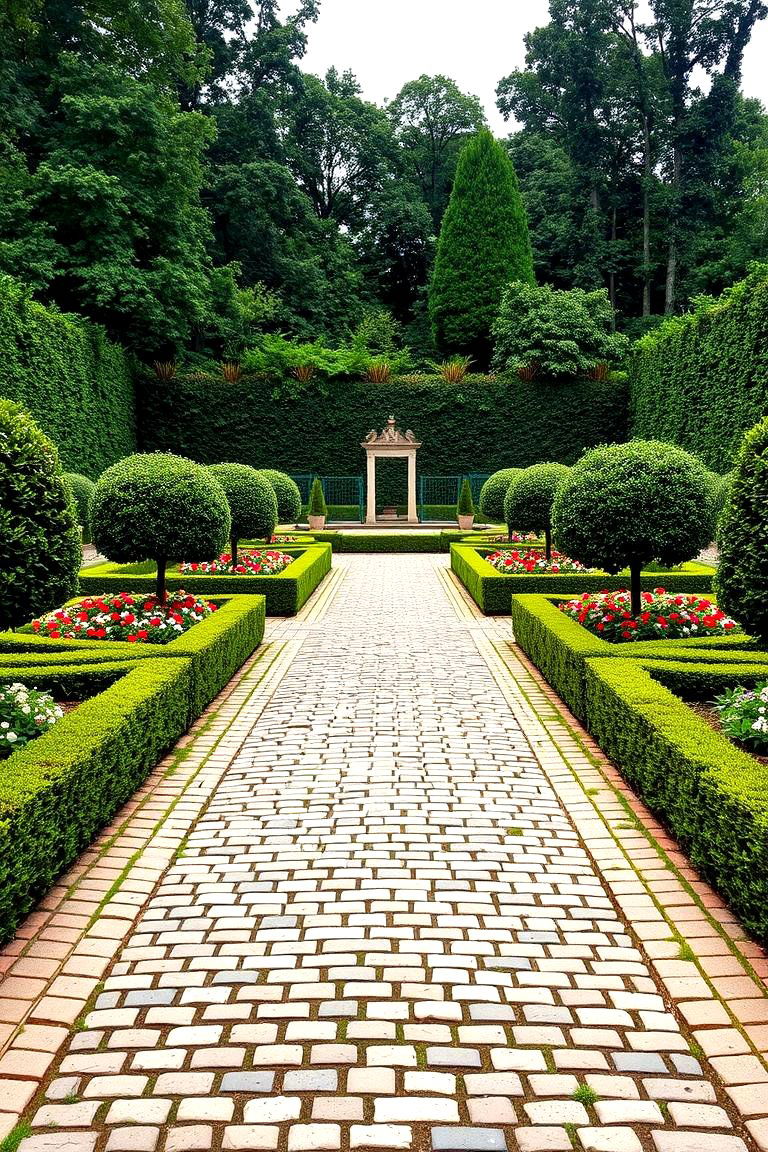
A classic geometric garden is defined by its orderly lines and symmetrical designs, often featuring rectangular or square planting beds. This structured layout creates a visually appealing and balanced space, perfect for creating a sense of calm and order. The use of boxwood hedges and neatly trimmed shrubs in precise shapes adds a sophisticated touch, while pathways paved with cobblestones or gravel enhance the formality. The key benefit of this design is its timelessness, as geometric patterns never go out of style and complement any architecture.
2. Courtyard Garden

Imagine stepping into a serene courtyard garden where every element is purposefully arranged. This intimate space often centers around a decorative water feature, like a fountain or pond, which provides both aesthetic appeal and soothing sounds. Surrounded by high walls or hedges, the courtyard garden offers a private retreat from the outside world. The beauty of this garden lies in its compactness, allowing for intricate detailing, such as stone statues or elegant topiary. Its closed-off nature makes it feel like an exclusive sanctuary, perfect for relaxation.
3. Parterre Garden

A parterre garden is a classic formal style that thrives on symmetry and decorative patterns within the planting beds. These gardens are typically laid out in a series of geometric shapes, like diamonds or squares, and often incorporate low hedges to delineate the design. Flowering plants are meticulously arranged to enhance the visual impact, creating a beautiful, vibrant display. The charm of parterre gardens lies in their precise, organized layout, and they are ideal for those who appreciate a garden that feels like a work of art.
4. Formal English Garden

The formal English garden combines structured elements with a naturalistic feel, often incorporating lush green lawns, intricate topiaries, and beautiful flower borders. What makes this garden stand out is its balance between neatness and the occasional wild flourish. Although there is a deliberate sense of order, English gardens often allow for a blend of flowering plants in various colors, which injects vibrancy into the space. The benefit of this design is its ability to look formal while still feeling organic and inviting.
5. Knot Garden

A knot garden is a unique type of formal garden that features intricate designs made of low hedges, typically shaped like knots or loops. These gardens often incorporate fragrant herbs such as thyme, lavender, or rosemary to add texture and aroma. The patterns within the knot garden are so detailed that they resemble intricate tapestry designs, creating a beautiful, almost magical effect. The benefit of the knot garden is its ability to captivate the eye and its suitability for smaller spaces, where it can make a big visual impact.
6. French Formal Garden

A French formal garden, often seen in grand estates like Versailles, exudes elegance through its meticulously planned layouts. This design is characterized by expansive lawns, neatly trimmed hedges, and stunning water features such as long reflective pools. The use of symmetrical paths, geometric flowerbeds, and carefully placed statues enhances the formality. The main advantage of this design is its sense of grandeur, making it perfect for large spaces where the design can shine, offering an opulent atmosphere.
7. Italian Garden

An Italian garden is renowned for its elegance, blending symmetry with classical elements such as terracotta pots, statues, and fountains. These gardens often feature pergolas, climbing plants, and well-maintained lawns that invite visitors to wander and explore. The soft, muted colors of the stone and the vibrancy of flowering plants create a timeless ambiance. Italian gardens are ideal for those who enjoy a space that combines both function and beauty, with features that encourage relaxation and contemplation.
8. Symmetrical Flower Beds

Symmetry is the backbone of many formal gardens, and symmetrical flower beds are a striking example of this principle in action. Arranged in balanced, mirror-image layouts, these beds create an organized and harmonious space. This style allows for a beautiful display of flowers in different hues, textures, and heights, all while maintaining perfect balance. The main advantage of symmetrical flower beds is their ability to create a visually soothing environment, ideal for anyone seeking a neat, controlled space filled with vibrant blooms.
9. Boxwood Garden

Boxwood is a favorite plant for formal gardens due to its ability to be shaped into nearly any form, from hedges to intricate topiaries. This versatile plant thrives in formal gardens, where precision is key, and can be used to define pathways, create focal points, or frame other garden elements. The dense, evergreen foliage provides year-round structure, adding both elegance and privacy. Boxwood gardens are perfect for those seeking low-maintenance plants that still deliver a structured, polished look.
10. Water Garden with Fountains

A water garden with fountains adds both movement and serenity to a formal garden. The sound of flowing water creates a calming atmosphere, while strategically placed fountains serve as beautiful focal points. This design often includes a pond, surrounded by aquatic plants and decorative stones, which brings a touch of nature to the garden. The benefit of incorporating water features is that they enhance the sense of tranquility in the space, offering both a visual and auditory experience.
11. Topiary Garden

Topiary gardens are defined by the art of pruning plants into specific shapes, often resembling animals, geometric forms, or abstract designs. This highly ornamental form of gardening is a hallmark of formal gardens, where every detail is carefully planned and executed. The charm of a topiary garden lies in the impressive, sculptural quality of the plants, adding an artistic and whimsical element to the otherwise structured space. These gardens are perfect for adding a sense of creativity while maintaining formality.
12. Terraced Garden

A terraced garden takes advantage of elevation changes by creating levels or "terraces" that lead the eye upward. This design allows for the use of varied plantings on each level, giving depth and dimension to the space. The formal terraced garden often incorporates stone walls, wrought iron railings, or carefully manicured hedges to define each level. The benefit of this design is that it makes even sloped terrains look elegant and purposeful, with each step offering a new visual surprise.
13. Garden with Classical Statues

Incorporating classical statues into your formal garden brings an air of sophistication and history to the space. These statues can range from Greek and Roman-inspired figures to more abstract sculptures, all contributing to the garden’s elevated atmosphere. Placing statues at focal points, such as at the end of a pathway or near a water feature, adds both drama and interest. The beauty of this design lies in how the statues become part of the overall artful composition, enhancing the formality of the garden.
14. Mediterranean Garden
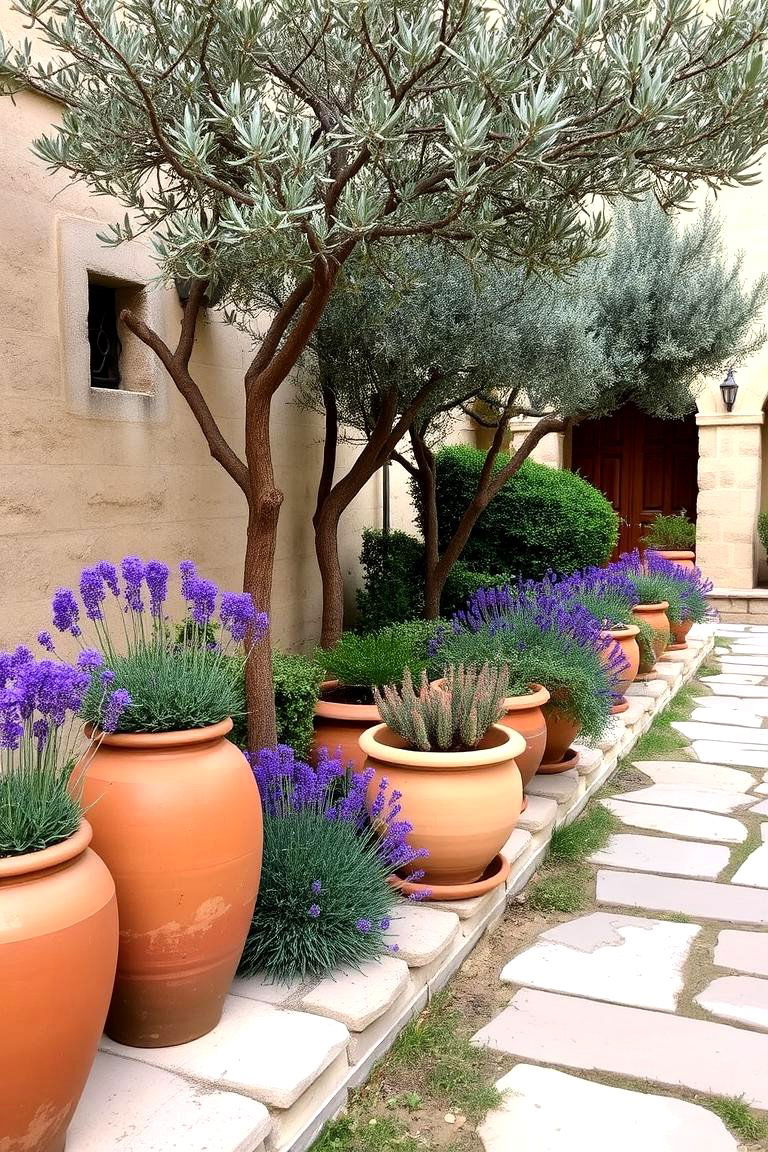
Mediterranean gardens are known for their laid-back elegance, often combining elements such as terracotta pots, lavender, olive trees, and stone pathways. These gardens, inspired by the Mediterranean coast, are designed to thrive in warm, dry climates, with drought-tolerant plants and carefully curated spaces for relaxation. The benefit of a Mediterranean garden is that it blends beauty with practicality, offering a stylish yet low-maintenance design that invites outdoor living and tranquility.
15. Rose Garden

A rose garden is an elegant addition to any formal garden, with its array of colors, textures, and fragrances. Roses are often arranged in perfectly manicured beds or in structured designs, like a rose arch or pergola, making them the focal point of the space. The key benefit of a rose garden is its ability to create a lush, romantic atmosphere, with fragrant blooms that change with the seasons. It’s perfect for gardeners who appreciate beauty and a bit of floral artistry.
16. Zen Garden

A Zen garden embraces simplicity, focusing on calm and peaceful designs, often using sand, rocks, and minimalist plants. These gardens are inspired by Japanese traditions and encourage mindfulness and relaxation. The primary focus is on creating a meditative space, where every element has a purpose. The beauty of a Zen garden is its ability to offer peace and serenity, making it ideal for those looking for a garden that promotes relaxation and a moment of quiet reflection.
17. Formal Lawn Garden
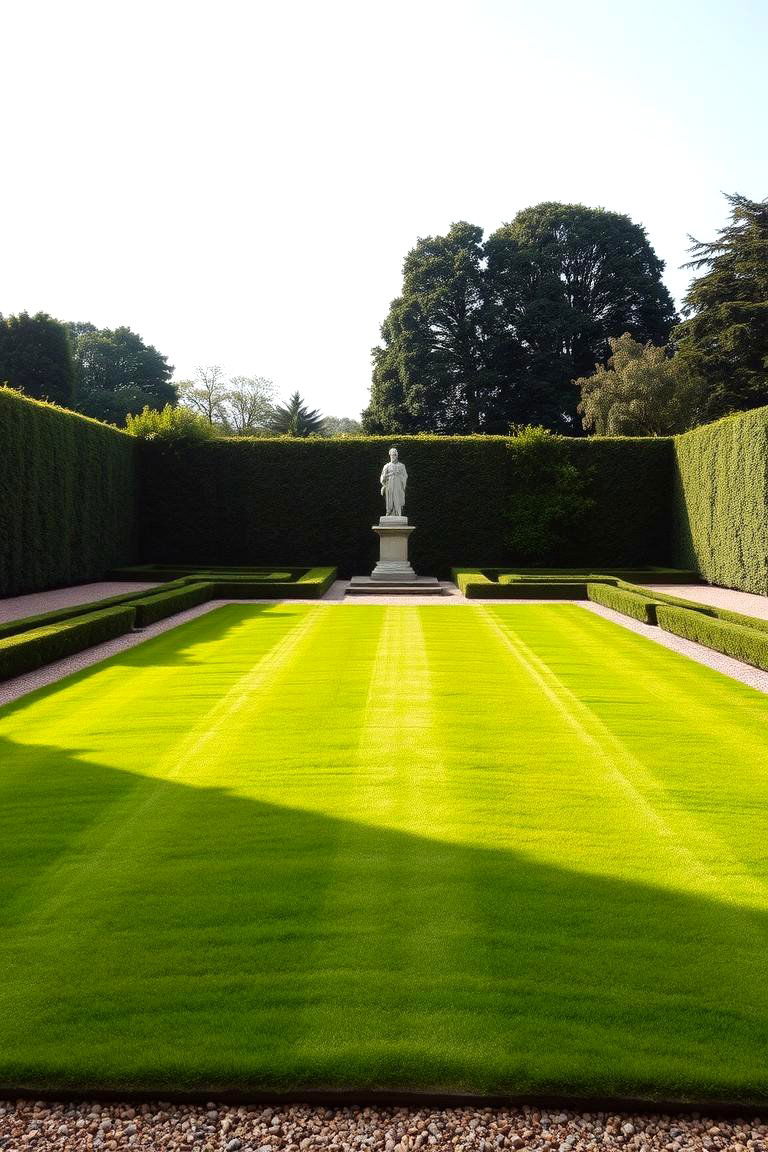
A formal lawn garden is all about symmetry, clean lines, and large, well-maintained expanses of grass. This type of garden typically features pathways or borders made from hedges, stone, or brick to break up the space. The benefit of a formal lawn garden is its simplicity and elegance, allowing for easy maintenance while providing a pristine environment for outdoor activities or relaxation. The clear, defined boundaries give the space an organized and polished feel.
18. Herb Garden in Formal Design
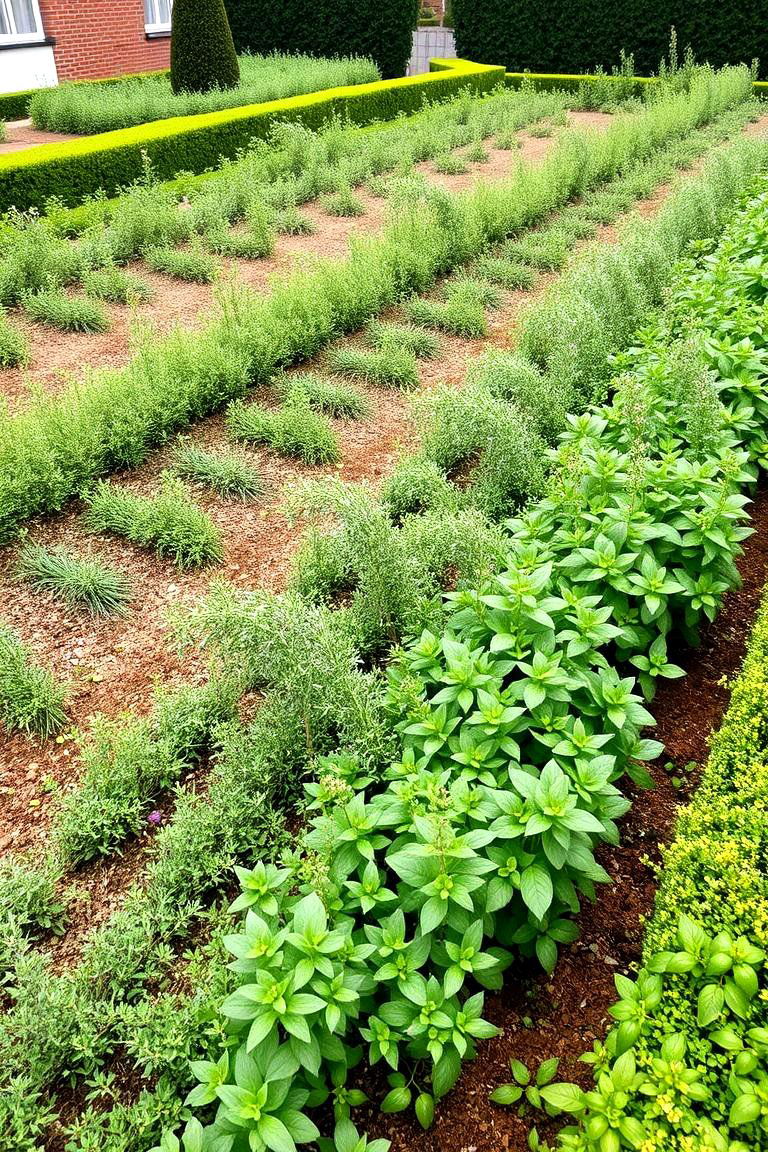
A formal herb garden combines the utility of growing herbs with the structure of a formal design. Often featuring neatly arranged rows or circular patterns, this garden is perfect for those who want a functional yet aesthetically pleasing outdoor space. The clean lines of a formal herb garden are complemented by fragrant herbs like basil, rosemary, and thyme, adding both beauty and aroma to the space. The main advantage of this design is that it offers both culinary benefits and visual appeal.
19. Formal Woodland Garden

A formal woodland garden blends natural elements with structured planting arrangements, offering a unique formal design in a wooded setting. The use of deciduous trees, ferns, and mosses creates a serene atmosphere, while hedges and ornamental shrubs provide structure. This style is ideal for shaded areas where a more traditional formal garden may not thrive. The benefit of this garden is that it brings order to the natural chaos of the forest, creating a harmonious blend of formality and nature.
20. Formal Tropical Garden

A formal tropical garden brings the lush beauty of tropical plants into a structured, organized layout. Large, vibrant foliage such as palm trees, ferns, and flowering plants are arranged in defined beds, often surrounded by neat pathways or borders. The benefit of this garden design is its ability to offer an exotic feel while maintaining a clean and orderly layout. It’s perfect for those who love the vibrant colors and textures of tropical plants but want to maintain the control and elegance of a formal garden.
21. Classic Rose Arbor

A classic rose arbor offers a stunning way to incorporate climbing roses into a formal garden. Arbors, typically made from wood or metal, serve as elegant structures that allow roses to bloom in cascading vines. The benefit of this design is the romantic and dramatic effect the roses provide as they climb upward, offering both beauty and fragrance. This addition transforms any garden into a visually striking and aromatic experience.
22. Formal Herbaceous Border

A formal herbaceous border is a planting scheme that emphasizes order and symmetry through the use of perennial flowers and plants. These borders are often neatly edged with low hedges or stones and feature vibrant plantings in a planned sequence. The benefit of this design is that it offers seasonal beauty year-round, with the precise arrangement enhancing the formal aesthetic. Herbaceous borders are ideal for those who enjoy a colorful display while maintaining a structured look.
23. Sculptural Garden Design
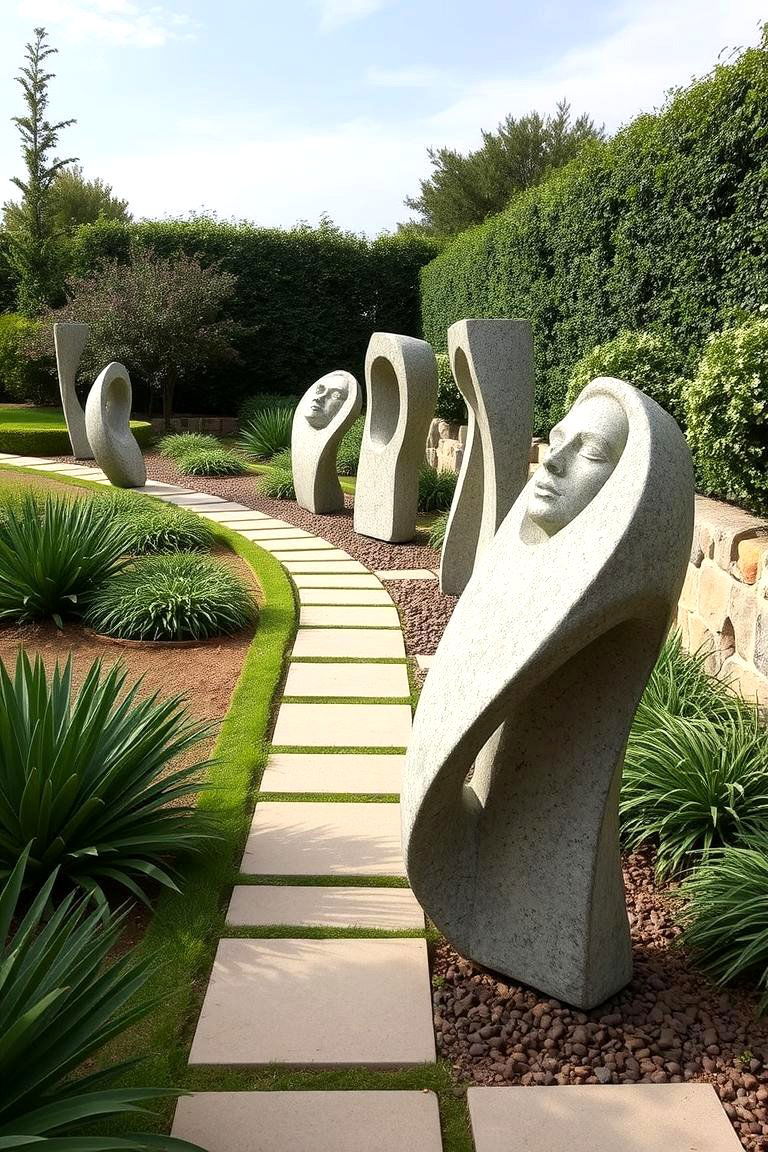
A sculptural garden integrates art into the landscape, often featuring modern sculptures or intricate stone carvings. These statues are typically placed in key areas to draw the eye, serving as focal points throughout the garden. The beauty of this garden style is its ability to combine nature and art seamlessly, creating a visually striking outdoor environment. It’s perfect for those who appreciate art and wish to create a garden that is both elegant and expressive.
24. Boxed Topiary Garden
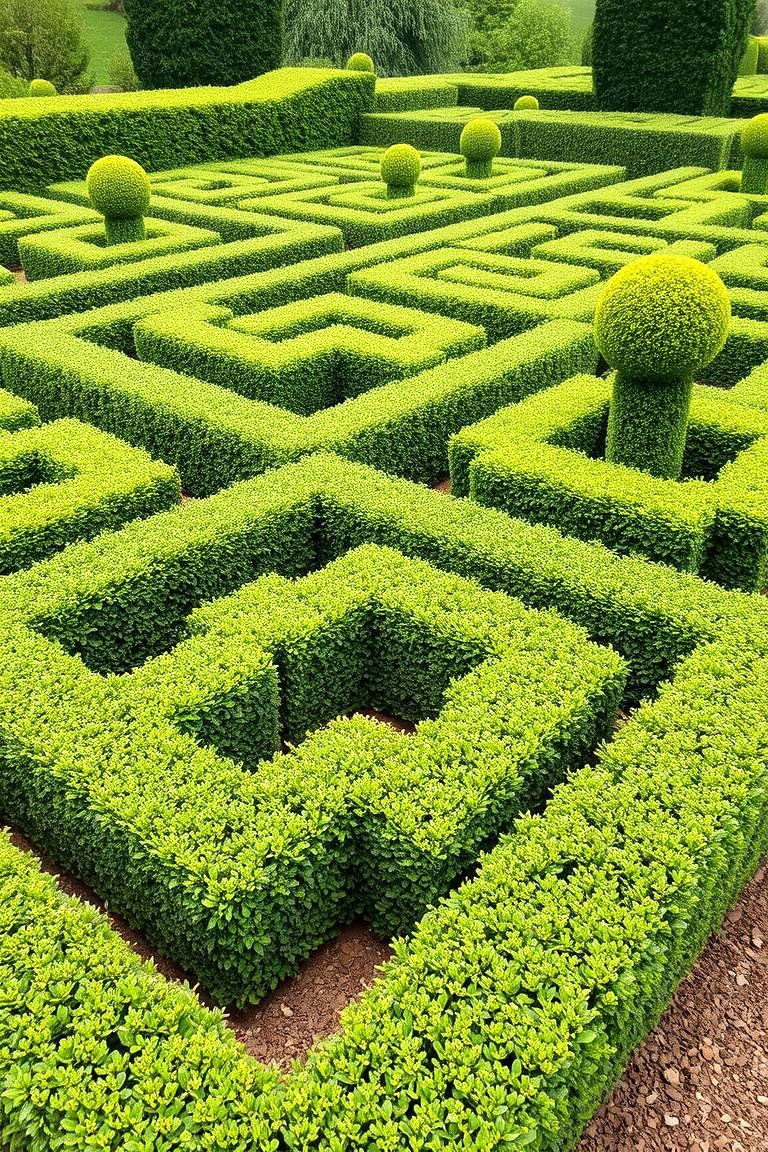
A boxed topiary garden uses geometric shapes created from neatly clipped boxwood hedges arranged in boxes or other defined shapes. The structured layout creates a visually stunning display, with plants pruned to perfection. The benefit of this design is its ability to create a neat, organized garden space with a very polished look. It’s ideal for small spaces, where symmetry and structure can turn a garden into a work of art.
Conclusion:
Formal gardens offer endless possibilities for creating visually striking and harmonious outdoor spaces. From geometric designs to lush rose gardens, each idea provides an opportunity to express sophistication and elegance. Whether you're working with a small space or a grand estate, formal garden designs allow you to blend art with nature in a beautiful, functional way. By incorporating these ideas into your landscaping, you can transform your yard into a serene retreat that will provide joy and tranquility for years to come.




